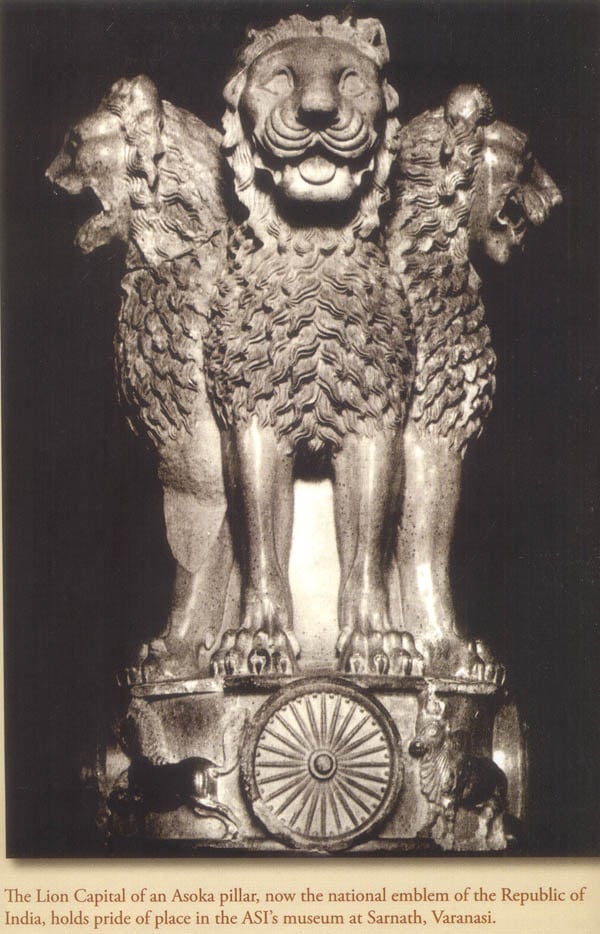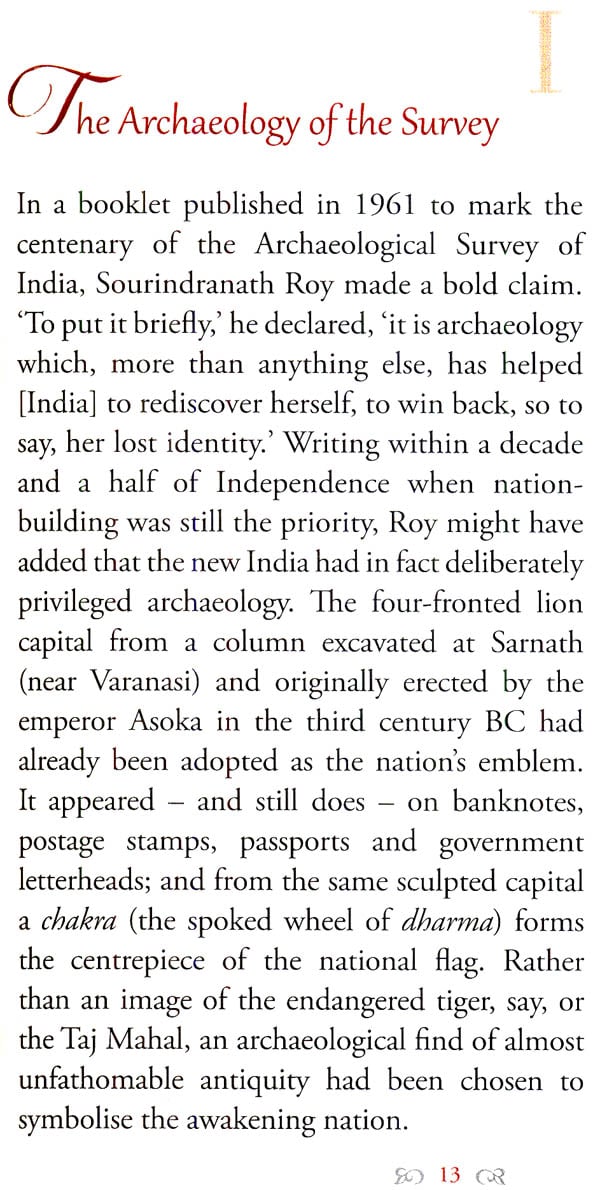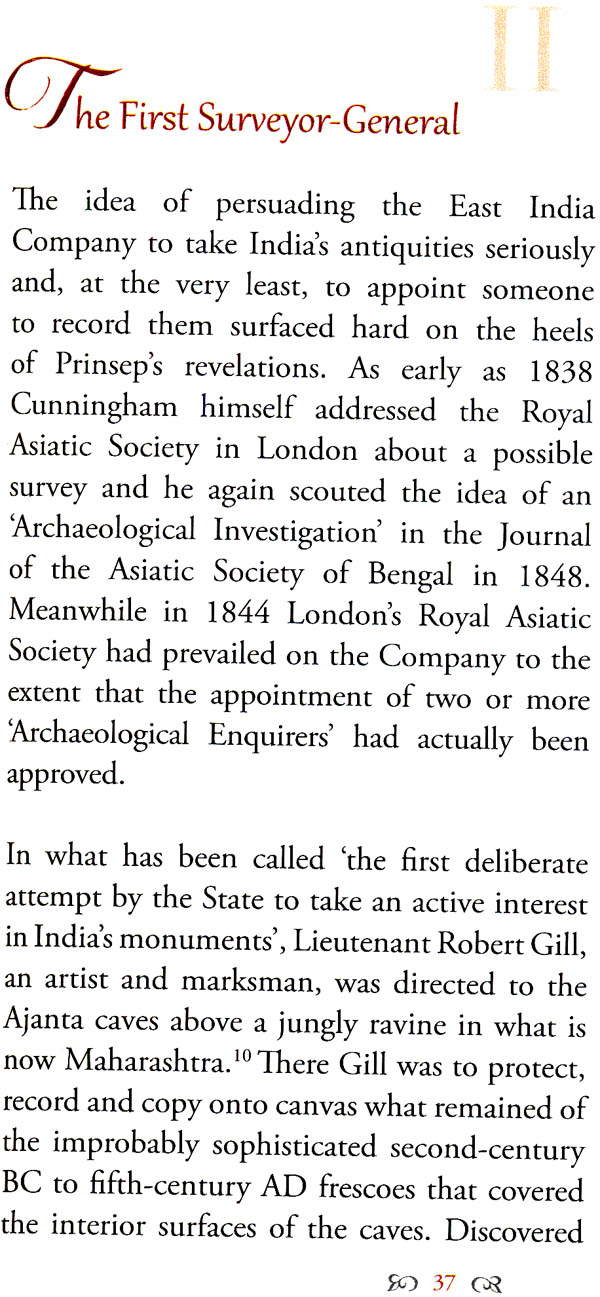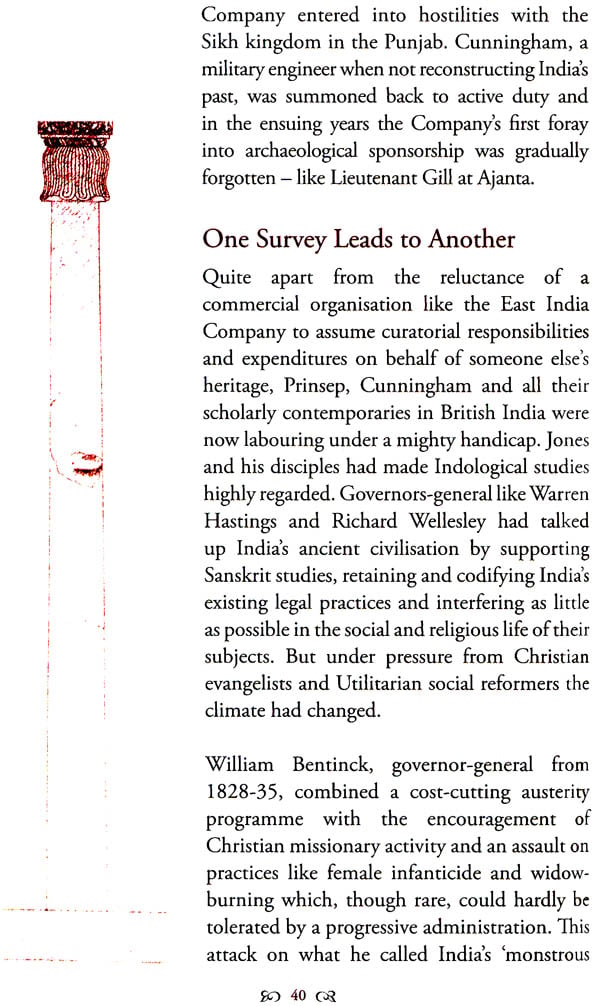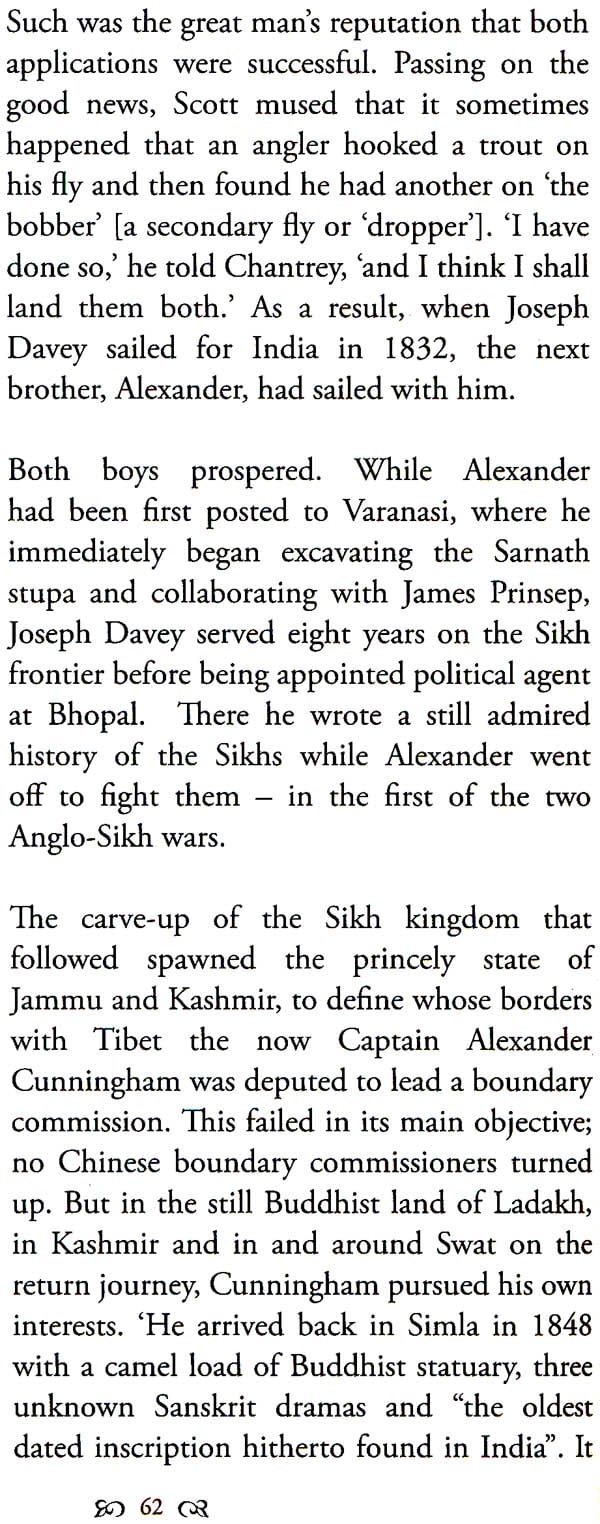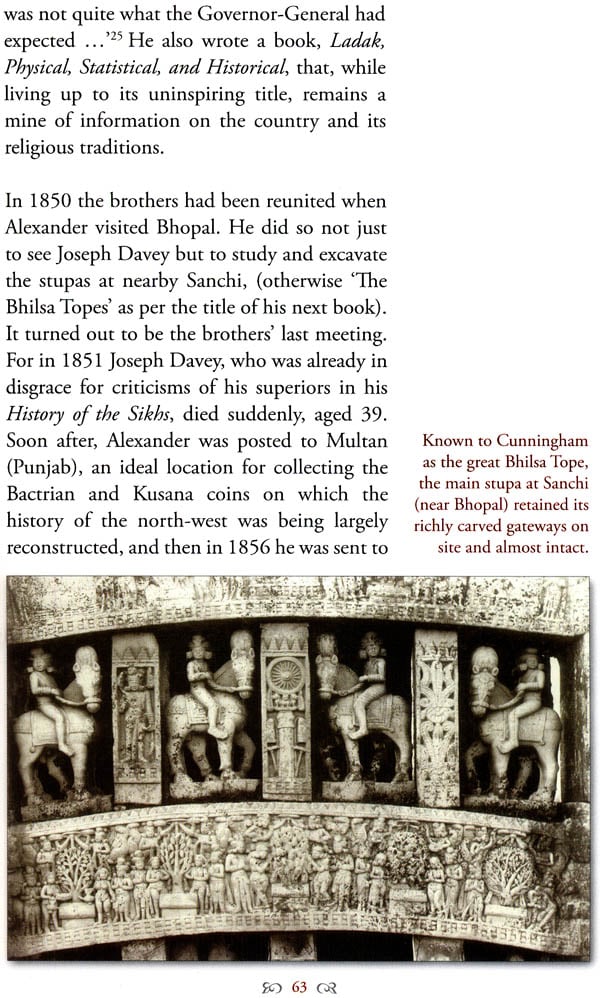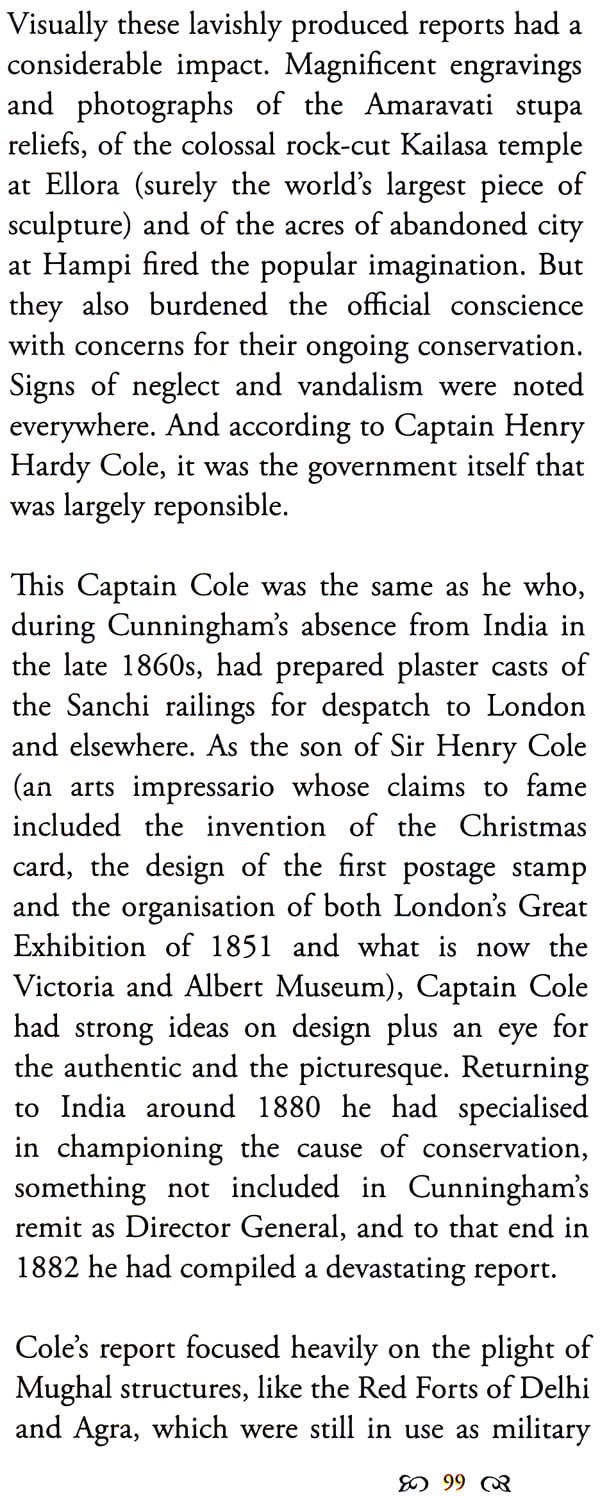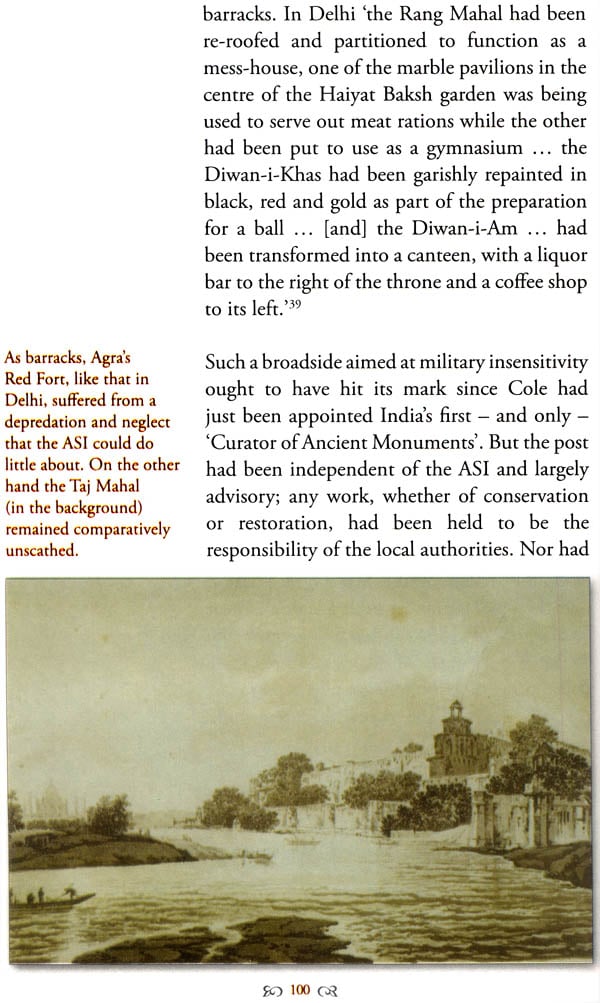
To Cherish and Conserve (The Early Years of the Archaeology Survey of India)
Book Specification
| Item Code: | NAM224 |
| Author: | John Kean |
| Publisher: | Archaeological Survey of India |
| Language: | English |
| Edition: | 2011 |
| Pages: | 115 (45 Color Illustrations) |
| Cover: | Paperback |
| Other Details | 9.0 inch X 6.0 inch |
| Weight | 250 gm |
Book Description
Celebrating 150 years is a fitting occasion to pay tribute to those who laid the foundation of the Archaeological Survey of India. This book records the immense effort of early archaeologists, explorers, and administrators who contributed to the discovery and documentation of India’s vast varied archaeological heritage.
John Keay, an eminent author of several book on India and Asia, has collated poignant information from Indian and British archives to weave an interesting narrative of the beginning of ASI.
John Keay has been writing about Indian for forty years. His India Discovered (1981) inspired a revival of interest in nineteenth-century scholarship and archaeology, and his best-selling Indian: A History (2000) is the standard narrative account of the subcontinent’s 5000-years past.
The Archaeological Survey of India (ASI) has over the last 150 years played a vital role in the re-discovery and conservation of India's rich architectural and archaeological heritage.
Today, ASI protects over 3667 monuments of national importance that reflect the true nature of India's cultural diversity and secular democracy. The buildings and sites under the aegis of ASI range from the prehistoric cave paintings of Bhimbetka to the astronomical marvels of the observatories of Jantar Mantar in Delhi and Jaipur. These monuments and sites under ASI's protection tell the story of the evolution of Indian architecture, sculpture and painting traditions in different regions of the country. Iconic buildings, like the Taj Mahal in Agra, the sacred Buddhist stupas of Sanchi and Bodh Gaya, Churches of Goa, and the grand edifices of the Mughal period form part of the shared heritage of the Indian subcontinent. Eighteen well-known examples of India's built heritage have been bestowed with the World Heritage Site status by the UNESCO and are recognized as having outstanding universal value by the global community. The ASI maintains 41 site museums that showcase significant finds, relics, sculpture, epigraphic records from archaeological excavations such as those of Dholavira in Gujarat, Nagarjunakonda in Andhra Pradesh and Sarnath in Uttar Pradesh.
Established in 1861, ASI was primarily involved in surveying and listing of monuments. At the turn of the twentieth century, its role expanded to include preservation and conservation within its purview. In the last 150 years, the organization has undertaken pioneering research in the field of preservation, conservation, architectural studies, epigraphy and underwater archaeology among others.
The 150 years celebration of ASI is a fitting occasion to pay tribute to those who laid the foundation of this organization, to the immense efforts of archaeologists who have labored in the field and added to the knowledge and understanding of India's rich historic past. This book acknowledges the innumerable contributions made by unnamed surveyors, explorers, epigraphists, draftsmen and excavators who contributed to the discovery and documentation of India's vast and varied archaeological heritage.
ASI is grateful to John Keay for preparing the contents of this valuable publication that narrates the story of the early years of the organization. We are also thankful to the National Culture Fund for initiating the idea of commemorating 150th anniversary of ASI with a book by this renowned author. Lastly, recognition must be given to the continuous support from the Ministry of Culture towards ASI's principal endeavour to protect India's invaluable heritage.
| I | The Archaeology Of The Survey | 13 |
| Oriental Jones | 19 | |
| The Pioneers | 23 | |
| Prinsep's Moment | 27 | |
| Enter Asoka | 31 | |
| II | The First Surveyor-General | 37 |
| One Survey Leads to Another | 40 | |
| Merirmee's Example | 43 | |
| Oriental ism as Orienteering | 47 | |
| In the Field | 52 | |
| Expanding Horizons | 59 | |
| Winding Up | 67 | |
| III | The First Director General | 75 |
| On The Road Again | 82 | |
| Winding Down | 89 | |
| IV | Cunningham To Curzon | 95 |
| Burgess Despairs | 102 | |
| Cometh the Hour | 106 | |
| Source Notes | 112 |
